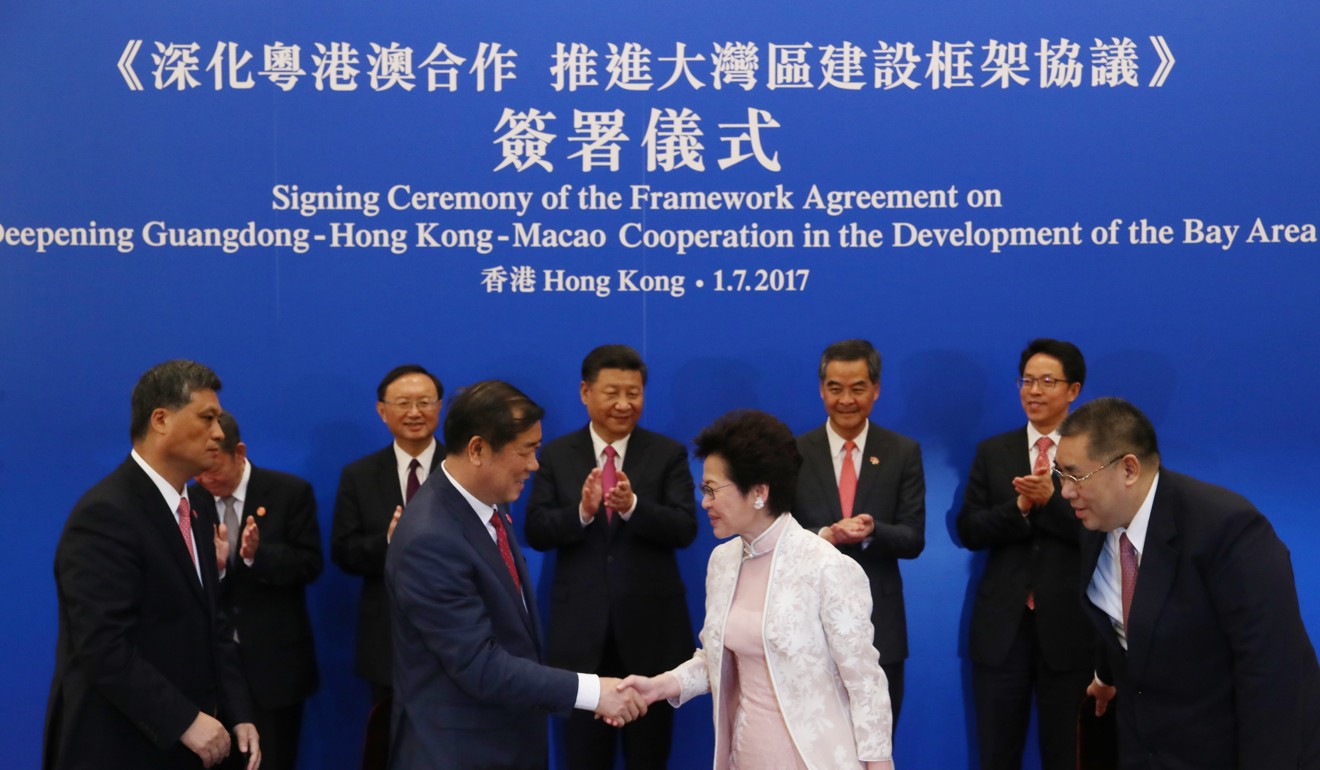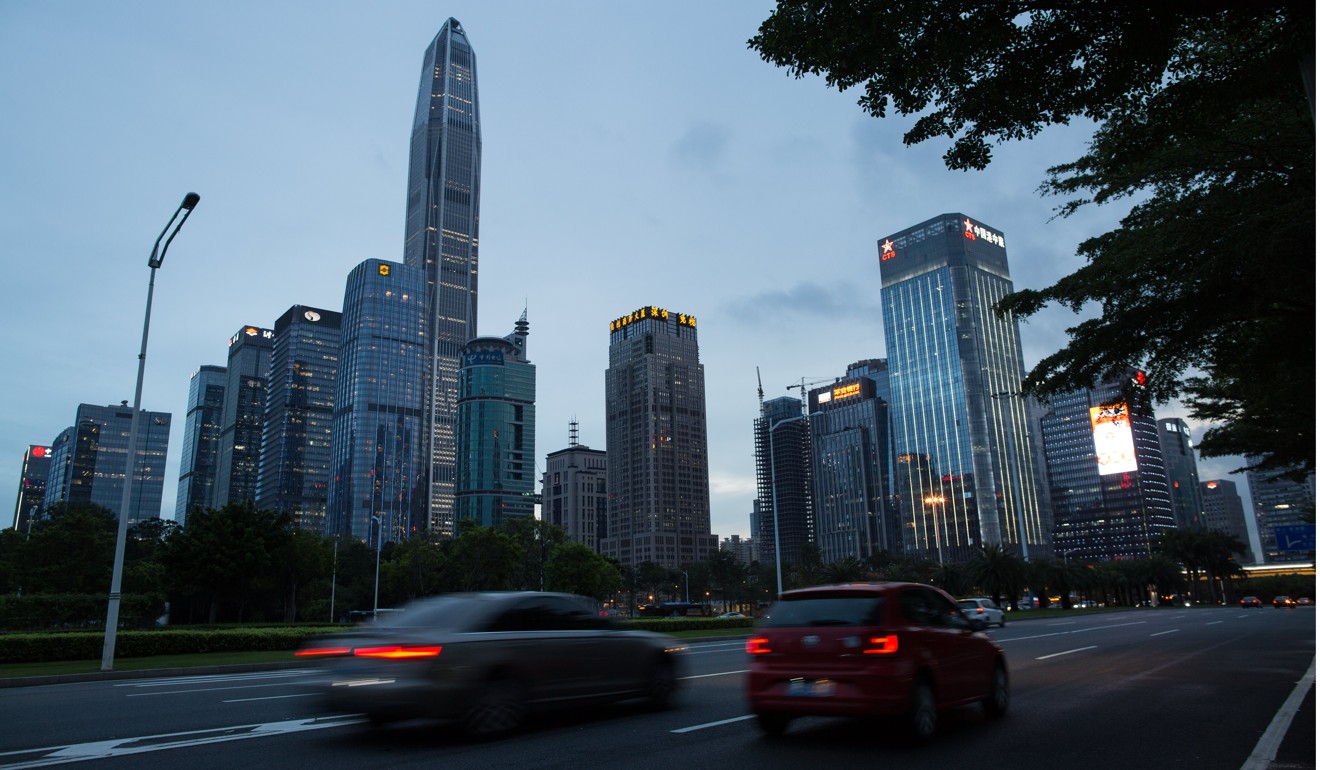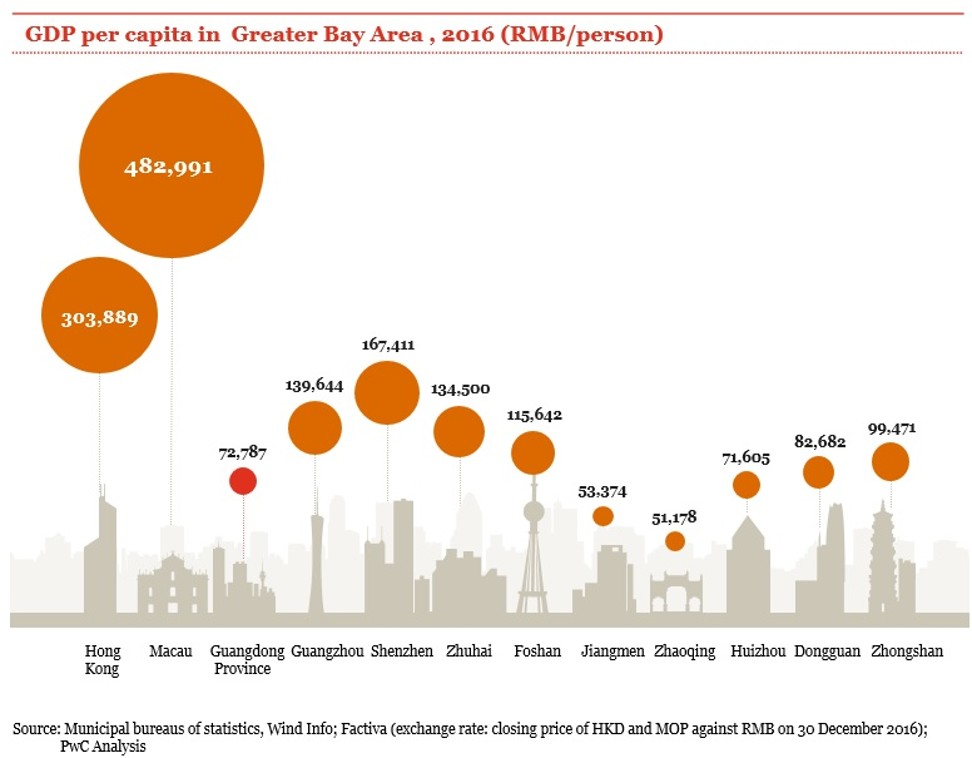
Pearl River Delta’s poorer cities plan big changes in ‘Greater Bay Area’ push
Jiangmen, famous for its dried tangerine peel, sets sights on becoming industrial powerhouse
The smell of tangerines wafts across Jiangmen’s Xinhui district on a late autumn day, as it has done for centuries.
But ambitious urbanisation plans for the city on the west bank of the Pearl River, part of the Chinese government’s “Greater Bay Area” drive, mean it may not do so for much longer.
Chen Mei, in her 60s, makes extra money this time of the year by carefully removing tangerine peels. Her wrinkled hands can remove thousands of peels, in one piece, from about 300kg of tangerines a day, for which she earns about 80 yuan (US$12).
The peel, known as chenpi, is then dried for at least three years to gain a special flavour that makes it a popular ingredient in Cantonese cuisine. The best tangerine peel is from Xinhui and chenpi that is 10 years old can sell for as much as 2,000 yuan a kilogram.
The townspeople have been processing chenpi for centuries, and, on a recent visit, as they spread fresh tangerine peels on the road to dry, a sweet aroma filled the town.
However, the local government wants to transform the semi-rural landscape by building a 340 sq km Yinhu Bay New Town, full of apartment blocks, office towers and modern factories, as part of Beijing’s Greater Bay Area plan, which aims to forge an urban cluster in southern China that can rival America’s Los Angeles Bay area and the Tokyo Bay area in Japan. It also plans to create a 3,240 sq km Greater Guanghai Bay Economic Zone, encompassing several of its county-level cities.

The plan, encompassing Guangzhou, Shenzhen, Zhuhai, Foshan, Zhongshan, Dongguan, Huizhou, Jiangmen and Zhaoqing, as well as Hong Kong and Macau, has become a national development strategy. Jiangmen, among the least developed areas in Guangdong province’s Pearl River, is especially keen to take part, with the local government hoping the Hong Kong-Zhuhai-Macau bridge, due to open next year, will boost its integration with richer neighbours.
Home prices in Jiangmen, averaging 10,000 yuan a square metre, are just a seventh of those in Shenzhen or a fifth of Guangzhou’s, and its per capita income is less than half of Shenzhen’s.
The Greater Bay Area, where late paramount leader Deng Xiaoping began China’s embrace of capitalism in the late 1970s, is already the richest part of the country, but, despite nearly four decades of development, it has not escaped wider development woes such as water pollution and a gaping wealth gap.
The Chinese leadership under President Xi Jinping has pitched the Greater Bay Area concept as a way to explore a new model of urbanisation and development that is less reliant on investment, but a recent visit to Jiangmen on a government sponsored tour for journalists and follow-up interviews with residents, businesses people and researchers found that its impact in poorer localities is driven by government planning and state-led spending.
The local government says Jiangmen will roll out three “100 billion yuan” investment plans for industrial and property development, even though the city’s fiscal revenues totalled just 20 billion yuan last year.
Deputy mayor Xu Xiaoxiong said told journalists during last month’s media tour that the city was developing six “industrial parks” at the same time – the smallest covering an area of 6.7 sq km.

“We will pool all our capital and resources to make these industrial clusters and parks the best platform for industrial transfer from Guangzhou, Shenzhen and Foshan – especially advanced equipment manufacturing,” he said.
Jiangmen is not alone in drafting ambitious plans. Zhongshan, Zhaoqing and Huizhou, three other relatively underdeveloped cities, are drawing up similar, if not more ambitious, plans to become world-class, modern manufacturing and services hubs. Zhongshan has plans for a 230 sq km new district, Tsuihang, to serve as a type of bonded import-export zone, while Zhaoqing envisions three industrial clusters with total annual output worth up to 100 billion yuan.
Peng Peng, an economist and the vice-president of the Guangdong-based South Non-governmental Think-tank, said the four cities viewed cheaper land and labour as their key competitive advantages, along with improved transport infrastructure.
“Every one of these developing cities dreams that advanced manufacturing, robotics and automation giants will move or expand their factories and cluster together in their newly planned industrial parks, followed by an influx of skilled workers and population growth,” he said.
“But the fact is that even in the hub of the area … there’s lot of newly-built but empty industrial bases in subdistricts waiting for new, high-end factories to fill them.”
Simon Zhao, founding director of the International Centre for China Development Studies at Hong Kong University, said it would not be easy for such cities to attract enough capital and talent to turn their blueprints into reality unless there was a long-term economic boom in the bay area.
“Most traditional manufacturing industries have been forced to move out of Guangdong because of soaring costs and new businesses like tech start-ups or innovative manufacturing would have to stay in Shenzhen and Guangzhou because they need to be as close as possible to financing hubs and the stock market,” he said.
In September, Guangdong’s provincial government released the blueprint for a Guangzhou-Shenzhen Science and Technology Innovation Corridor, which it said would tap into the potential of Guangzhou, Dongguan and Shenzhen to develop an innovation-driven economy. Guangzhou, home to many research institutions, would focus on basic research, with Shenzhen translating innovative advances into products that would be manufactured in Dongguan.
“The central government hopes the Greater Bay Area will not only be a replica of Silicon Valley but can also outpace it as the most important centre for scientific and technological innovation,” said Lin Jiang, deputy head of a free-trade zone research institute at Guangdong’s Sun Yat-sen University.
Back in Jiangmen, already home to 4.5 million people, a construction boom is under way, with nine freeways under construction, along with intercity “light railway” lines.
Liang Zhongqun, 40, runs an advertising firm, Target Xplus, in Guangzhou, the provincial capital, but lives in Jiangmen. He said it had changed a lot in the past couple of years, with orchards and farmland disappearing to make way for new roads, commercial properties and urban centres.
“It’s much easier to commute from Jiangmen to Guangzhou, Shenzhen and Macau now,” he said.
Leng Chuanwei, who established a small start-up, Yiqiwn, in Jiangmen last year to produce “hi-tech” materials for toymakers, said he decided to invest there partly because factory rents and labour costs were lower than in the delta’s more developed cities.
However, he is finding it difficult to recruit top talent.
“It’s still hard to attract a veteran engineer to Jiangmen from Shenzhen unless you offer a very good pay rise,” he said. “But that would only double your expansion cost.”
Meanwhile, many Jiangmen residents are not looking forward to the gradual disappearance of its tangerine peel fragrance, laid-back lifestyle and subtropical rural landscape.
“It would be much better if Jiangmen could be a showcase, keeping its own beautiful villages, affordable living costs and historic culture,” Liang said.
Illustration: Lau Ka-kuen



